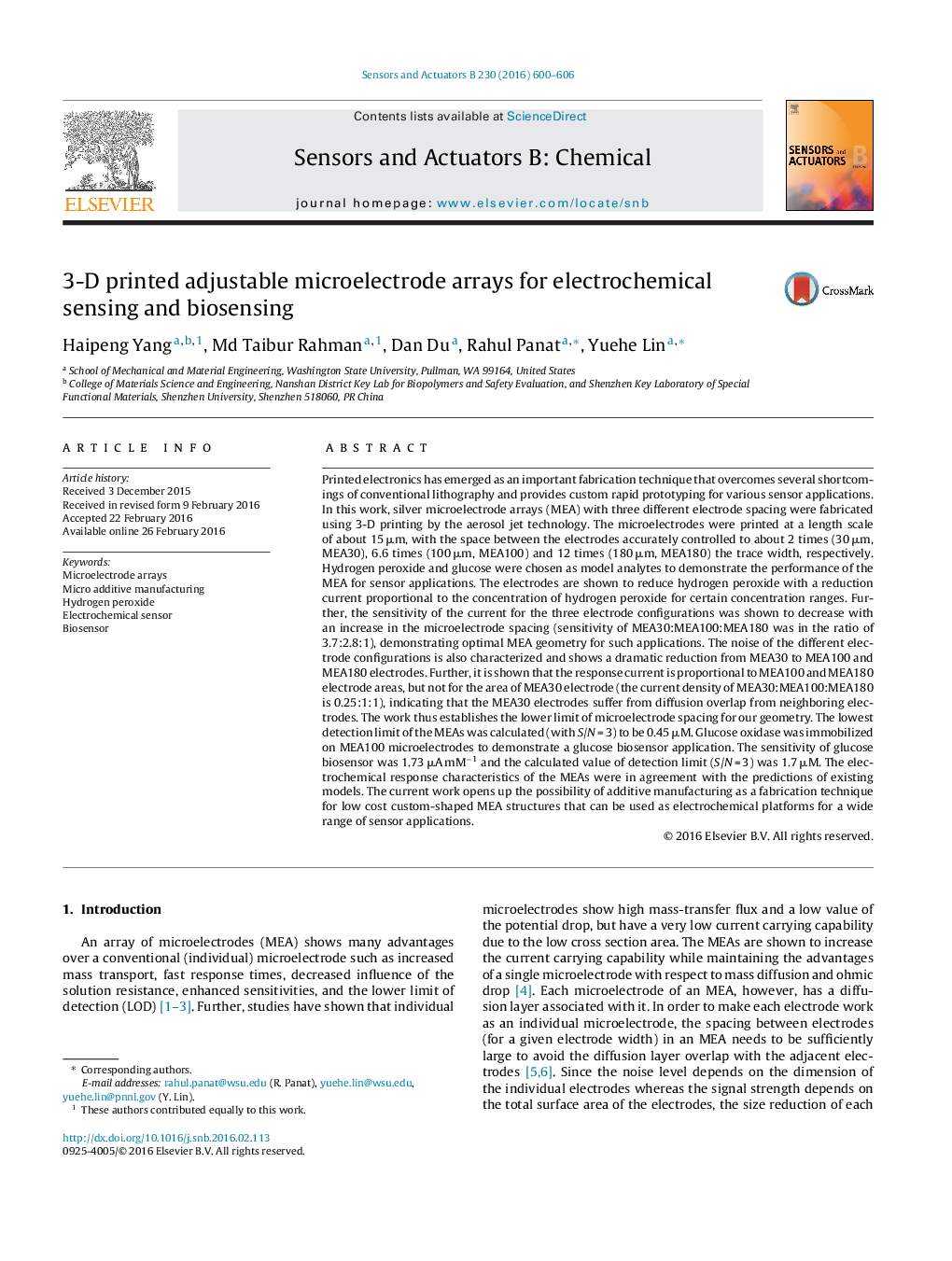| کد مقاله | کد نشریه | سال انتشار | مقاله انگلیسی | نسخه تمام متن |
|---|---|---|---|---|
| 741351 | 1462061 | 2016 | 7 صفحه PDF | دانلود رایگان |
• Silver microelectrode arrays (MEA) were prepared using aerosol jet technology.
• Silver trace spacing of the MEAs is controlled to be 30, 100 and 180 μm, respectively.
• Current density of MEA30:100:180 was 0.25:1:1, show diffusion layer overlap of MEA30.
• MEA100 has the lowest detection limit towards H2O2, which was 0.45 μM.
Printed electronics has emerged as an important fabrication technique that overcomes several shortcomings of conventional lithography and provides custom rapid prototyping for various sensor applications. In this work, silver microelectrode arrays (MEA) with three different electrode spacing were fabricated using 3-D printing by the aerosol jet technology. The microelectrodes were printed at a length scale of about 15 μm, with the space between the electrodes accurately controlled to about 2 times (30 μm, MEA30), 6.6 times (100 μm, MEA100) and 12 times (180 μm, MEA180) the trace width, respectively. Hydrogen peroxide and glucose were chosen as model analytes to demonstrate the performance of the MEA for sensor applications. The electrodes are shown to reduce hydrogen peroxide with a reduction current proportional to the concentration of hydrogen peroxide for certain concentration ranges. Further, the sensitivity of the current for the three electrode configurations was shown to decrease with an increase in the microelectrode spacing (sensitivity of MEA30:MEA100:MEA180 was in the ratio of 3.7:2.8:1), demonstrating optimal MEA geometry for such applications. The noise of the different electrode configurations is also characterized and shows a dramatic reduction from MEA30 to MEA100 and MEA180 electrodes. Further, it is shown that the response current is proportional to MEA100 and MEA180 electrode areas, but not for the area of MEA30 electrode (the current density of MEA30:MEA100:MEA180 is 0.25:1:1), indicating that the MEA30 electrodes suffer from diffusion overlap from neighboring electrodes. The work thus establishes the lower limit of microelectrode spacing for our geometry. The lowest detection limit of the MEAs was calculated (with S/N = 3) to be 0.45 μM. Glucose oxidase was immobilized on MEA100 microelectrodes to demonstrate a glucose biosensor application. The sensitivity of glucose biosensor was 1.73 μA mM−1 and the calculated value of detection limit (S/N = 3) was 1.7 μM. The electrochemical response characteristics of the MEAs were in agreement with the predictions of existing models. The current work opens up the possibility of additive manufacturing as a fabrication technique for low cost custom-shaped MEA structures that can be used as electrochemical platforms for a wide range of sensor applications.
Journal: Sensors and Actuators B: Chemical - Volume 230, July 2016, Pages 600–606
